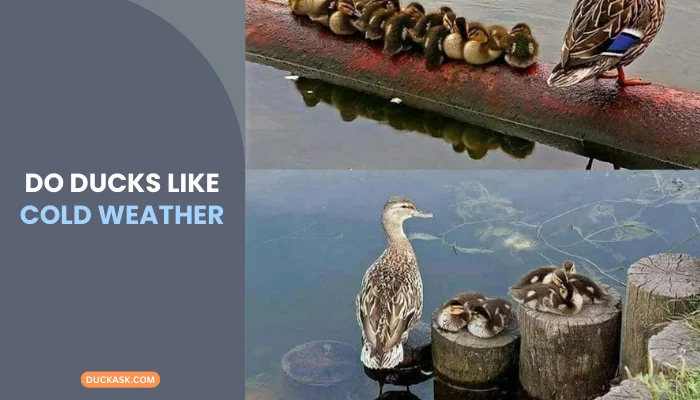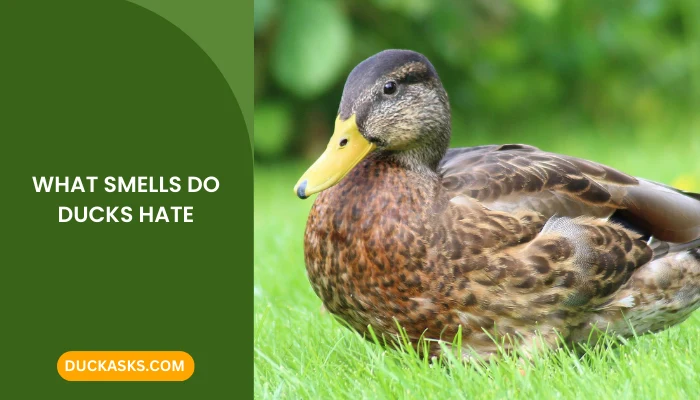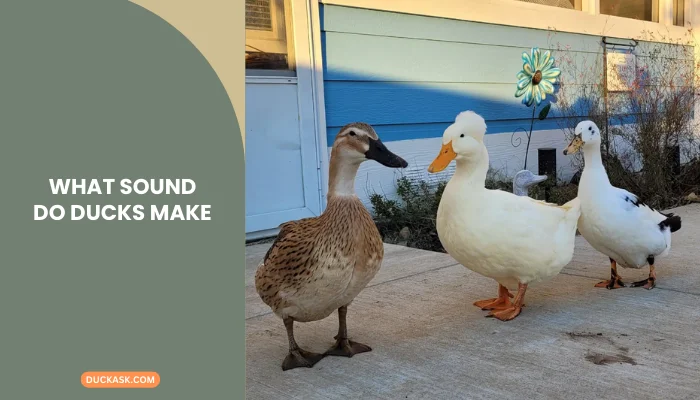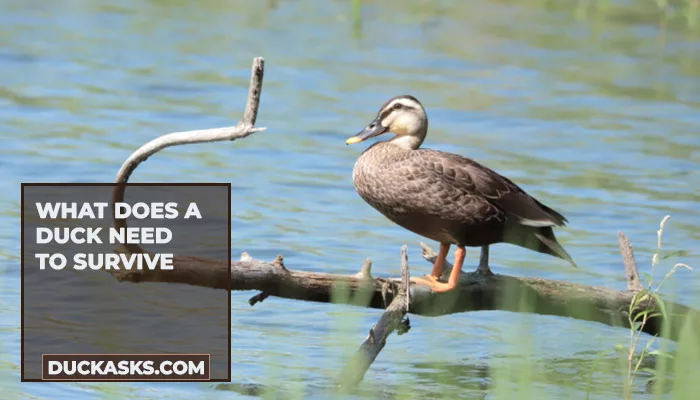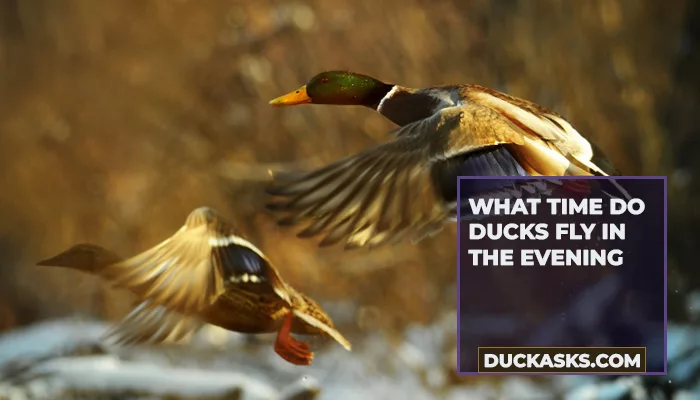Are Mallard Ducks Tame To Humans?
When we see the beautiful green-blue mallard duck swimming around in the pond, we often get the urge to feed these adorable ducks some pieces of bread. And deep within ourselves, we wonder, are mallard ducks tame to humans?
It’s not as easy as saying “yes” or “no.” to respond. Mallard ducks are not naturally tame to humans and may be aggressive if they feel threatened. However, they are known to be adaptable and may become accustomed to human presence if people regularly feed them. This can lead to them appearing tame.
Are you curious to know more about these beautiful birds and their behavior towards humans? Keep reading to find out the truth behind these engrossing creatures and learn how to raise friendly and tame Mallard ducks.
Read more about duck habits:
Can Mallard Ducks be domesticated?
Like many wild animals, mallard ducks have been domesticated by humans for various purposes. They are commonly kept for meat production and breeding.
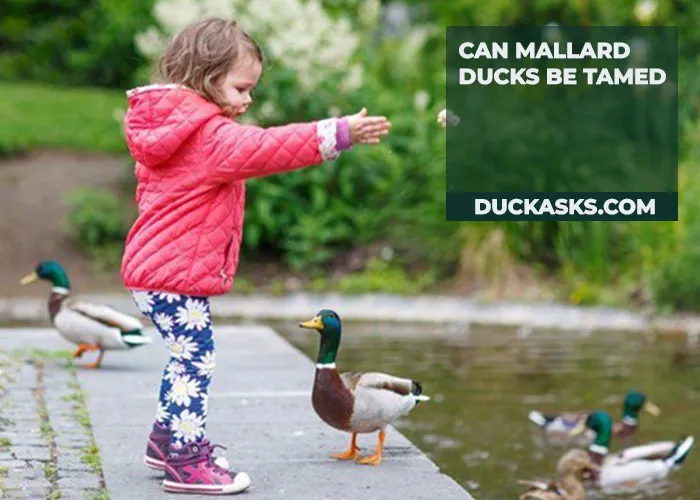
Domestication of animals involves breeding wild animals over many generations to develop desired characteristics such as size, color, and behavior.
Domestication History
Mallards were first domesticated thousands of years ago in Asia, where they were kept for their eggs, meat, and feathers.
Over time, selective breeding was used to develop different breeds of domesticated mallards with specific traits such as size and feather color. Today, there are various varieties of domesticated mallards, including the Pekin, Rouen, and Aylesbury breeds.
Keeping Mallards as Pets
It is vital to keep the mallards in a large water source or location if you want to have them as pets. These are not as sociable as other birds, like chickens or parrots, and are not appropriate for confined places.
Additionally, it is essential to purchase a domestic mallard and make confirm it does not escape into the wild, as this can negatively affect both the domesticated Mallard and wild mallard populations.
Are Mallard Ducks Friendly Towards Humans?
Mallard ducks are naturally cautious around humans. However, if people regularly feed them, they may associate humans with food and become less fearful.
This habituation can sometimes lead to mallard ducks becoming quite tame, but it’s important to note that this behavior is not typical of mallard ducks in the wild. Remember that they are still wild animals, and as such, they can be unpredictable.
While they may tolerate human presence, they can also become frightened or aggressive if they feel threatened. It’s best to observe mallard ducks from a safe distance and avoid approaching them too closely. Feeding them is not recommended as it can lead to dominion and other issues.
Pet-Friendly Mallards: What makes them So Appealing?
Before taming Mallard ducks, you should know what makes them Appealing to tame. These ducks are truly unique species of bird that stand out in a crowd. Not only do they have a distinctive physical appearance, but they also have a wide range of fascinating characteristics that make them truly one-of-a-kind.
Physical Characteristics
The male Mallard, or drake, has a glossy green head and white collar, while the female (called a hen) is streaked and mottled in shades of brown, buff, and black. Both sexes have orange legs and feet and an iridescent blue-black patch on the wing called a speculum.
They are considered the most abundant and widespread waterfowl in the Northern Hemisphere. They are found in the Arctic tundra to subtropical regions on every continent.
Adaptability and Resilience
Mallard ducks are extremely adaptable and can thrive in a wide range of different environments.
They are known for their resilience and are able to survive in harsh conditions that would kill other birds. They are able to find food from a variety of different sources, from plants to small animals.
Behavior and Social Structure
These ducks are known for their strong social bonds and complex social structure. They form lifelong pair bonds and often travel in large flocks. They have a hierarchical social system, with dominant birds leading the flock and protecting the group from predators.
Intelligence and Problem-Solving
Mallard ducks are highly intelligent birds with a remarkable ability to solve problems. They have been observed using tools, such as using hooks made from twigs, to extract food from tight spaces. They have also been observed displaying a wide range of complex behaviors such as mimicry, deception, and cooperation.
How to Tame Mallard Ducks?
Okay, now, it’s time to tame those mallard ducks! As most of you know, taming ducks can be challenging, especially if you’re not an experienced animal tamer. So now, I’m going to discuss the best methods and tips for taming mallard ducks.
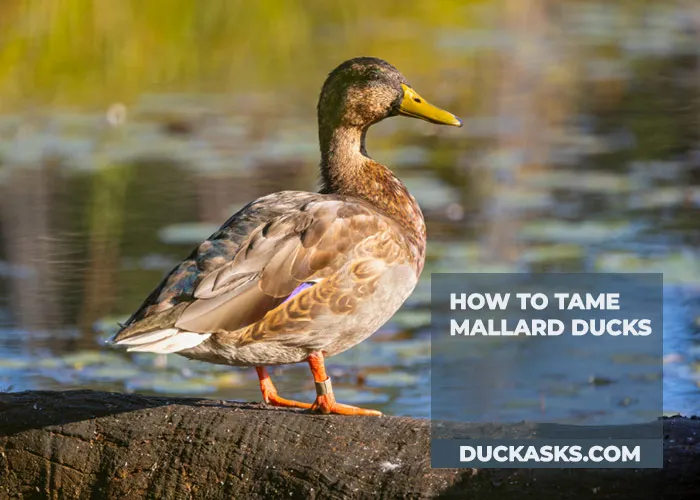
But it is essential to note many states in the United States, such as Florida, have made it illegal to possess, buy or even sell mallard ducks without a proper government permit. So, before you attempt to tame mallard ducks, make sure you check the laws in your area.
Step 1: Building Trust
To tame mallard ducks, it’s crucial to establish a trustful relationship with them. The first step is spending time with them daily, offering food, and gradually getting closer to them.
When they become used to your presence, you can start offering treats from your hand. Eventually, they’ll start taking food directly from you, which is a great sign that they’re becoming comfortable with you.
Step 2: Setting the Scene
Before you start working on taming your mallard ducks, it’s essential to make sure their environment is conducive to taming.
This means providing them with plenty of space, access to food and water, and a safe, comfortable place to rest. Ensure the area is free from predators and that the ducks have plenty of hiding places if they feel threatened.
Step 3: Moving Slowly
When working with mallard ducks, it’s essential to move slowly and calmly. If you move too quickly or make sudden movements, you may startle them and undo all your progress in building trust.
Instead, move slowly and make gradual movements, allowing the ducks to get used to your presence and build confidence in you.
Step 4: Training and Reinforcing Good Behaviour
Once you have established a trustful relationship with your mallard ducks, you can start working on training and reinforcing good behavior.
This could mean teaching them simple commands, such as coming when you call their name or rewarding them with treats when they behave in the way you want.
Regular training sessions can help maintain the bond between you and your ducks and keep them well-behaved.
Step 5: Patience and Consistency
Taming mallard ducks takes time and patience, so don’t expect results overnight. It’s important to be consistent in your approach, spending time with your ducks every day and offering food and treats on a regular basis.
Over time, you’ll see progress as your ducks become more confident and comfortable around you. With patience and consistency, you can build a strong bond with your mallard ducks that will last for years.
What Are the Pros and Cons of Having a Tame Mallard Duck?
As with everything, taming Mallard ducks comes with its own advantages and disadvantages. Let’s give you an overview!
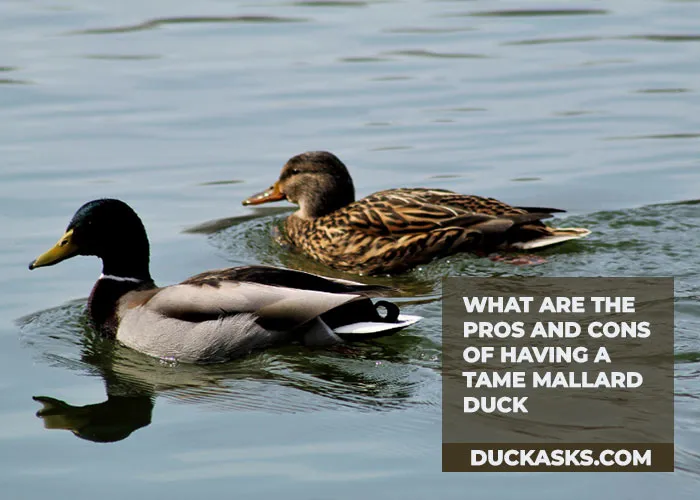
Advantages
- Their meat is very lean and packed with subtle flavors, so they make for excellent poultry animals. Their eggs are also great!
- The diet of mallard ducks consists of bugs and insects, so you can rest assured that your backward and pond will be almost bug-free.
- They live a long life in terms of duck years! The average Mallard will live up to 10 years.
Disadvantages
- The main disadvantage of taming these ducks is that they are extremely noisy!
- Also, since they are known to migrate, they might fly away in the breeding season, leaving your coop empty.
- Another downside of taming these ducks is that it can be a challenging task. They are often skittish and flighty, making it difficult to tame them successfully.
- These birds require a lot of space and care in order to thrive, which can be costly and time-consuming. They are very high maintenance, hence forget about your yearly holidays till your grows to grow old!
Conclusion
Mallard ducks are a beautiful and fascinating bird species that can be domesticated for meat production and breeding but require a large water source and are not as sociable as other birds.
They can be kept as pets, but it is crucial to confirm that they do not escape into the wild. Regarding tameness and friendliness towards humans, mallard ducks can be friendly, but they can also become too accustomed to humans and may aggressively approach them.
They are the most abundant and widespread waterfowl in the Northern Hemisphere, with distinctive physical characteristics such as green heads, brown bodies, and white collars. Overall, mallard ducks can make interesting and unique pets, but proper care and consideration should be taken before taming them.
Image Credit: Canva.com/photos

